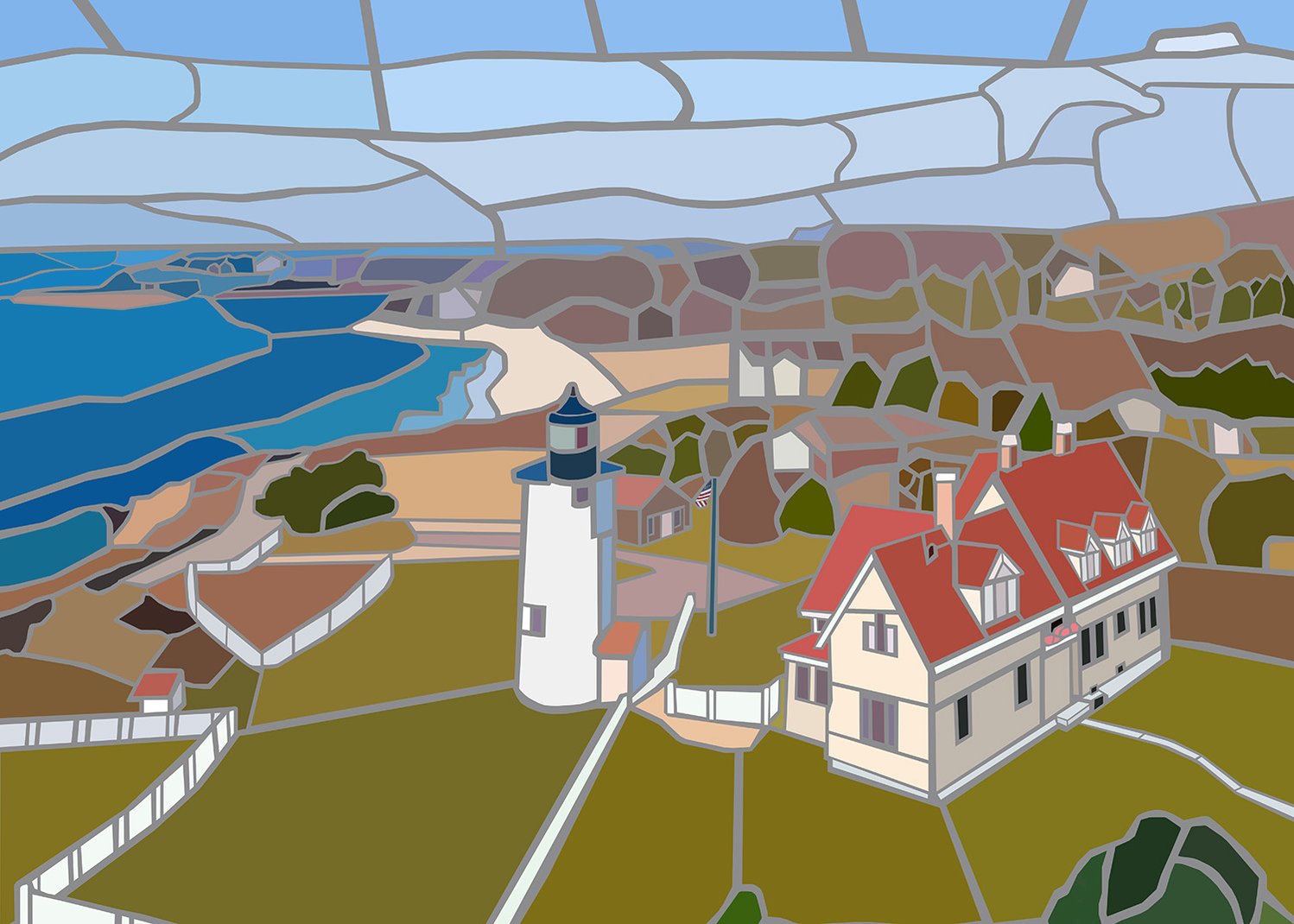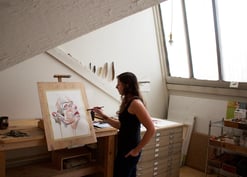Jonathan Mandell, a mosaic artist with over 30 years of experience, discovered his passion during a senior sculpture class at Northwestern University. Influenced by color theory and drawing techniques, his art focuses on visually striking pieces that convey spatial composition, perspective, color, line, and narrative.
Using ceramic tiles, hand-blown glass shards, and lapidary elements, Mandell's wall-mounted panels blend bas-relief with uplifting narratives, measuring success through the development of each piece.
Can you tell us about your journey to becoming a professional artist?
In 1984 I was a senior at Northwestern University, majoring in U.S. history. In my final term I signed up for a sculpture class. This experience lit a spark for me.
After graduation I returned to my native Philadelphia. I signed up for core intro classes at what was The Philadelphia College of Art (now The University of the Arts). As I was completing this curriculum, a friend, artist/mentor, Selim el-Sherif, introduced me to Neil Welliver, acclaimed Maine landscape painter and dean of the Graduate School of Fine Arts at The University of Pennsylvania. I ultimately earned my MFA in 1990 from Penn with a focus on sculpture.
Most of the art that I create today is based on ideas that I learned while studying under Professor Sewell Silman. He taught color theory and drawing. His approach to color theory was to use Color-Aid paper. He encouraged students to do a deep dive in color experimentation, learning how proportion and placement of color ultimately allows color to act in different ways. Similarly, Professor Silman's approach to drawing focused solely on making lines act. We learned how to create visual illusions like depth perspective, the volume of form, translucency, motion, etc. I applied the professor’s approach to color and line to the medium of mosaic.
From the beginning of my creating mosaic, it has always been about shaping tiles that when laid next to one another, they create grout lines that act like drawing lines.
Tell us about your work.
Over the last 30 years, I have been exploring many different ways to approach mosaic, both as wall mounted panels (tactile paintings) and 3D sculpture. I work with ceramic tile, hand blown glass shards and lapidary. The glass shards are convex and concave. This allows me to explore bas-relief elements across the mosaic’s surface.
My art is by and large, upbeat in its tone. I have always been of the personal belief that creating beauty out of nothingness is a farther reach than expressions of pain. Each of my mosaics is a study in: spatial composition, perspective, color composition, use of line and narrative. Each completed work is a visual marker of what I have learned over time in these areas. Threaded in to these visual solutions are narratives that bring the viewer to a place or subject.

Tell us about your process.
I create a wall mounted panel using 1 x 4 3/4 wood strips covered in 1/4 plywood. There is a mitered cleat that runs across the horizontal. A reciprocal strip attaches to the wall for the panel to mount on. I use a wet saw as my primary tool along with a tile nipper. I adhere the tiles to the surface of the panel and grout with a latex stucco. This creates a stone finish edge. The completed panel resembles a stone slab with the imagery on the top face. I have also wrapped the return edge of the panel with tiles in some pieces. The panels are lighter weight than they appear given the hollow wood frame and the latex stucco versus a cement based grout.
When you are looking for inspiration, what resources do you turn to?
My process often involves creating “mosaic” drawings using Photoshop. In the drawings I precisely shape the tiles and blow the drawing up to the scale of my panel. I complete the panel in sections. Most often in painting, the surface is developed gradually. Once I am in the studio working I am inspired to work from my drawing, fabricating the pieces of tile in order to execute a drawing into tile.
The typical day involves my shaping tiles for hours on the wet saw and then setting sections of detail on the panel. Once the detail is in place I create the background. My process involves a lot of back and forth, fine tuning of the tiles until they are achieving maximal effect.

Finding the right rhythm to be productive can be a challenge, what advice do you have for staying productive and focused?
Start slow. Gather the materials that you need and little by little build your pace until you are at full stride and maintain that intensity as long as you can. Stop at a point where you are well positioned for the next day’s work.
What is your advice for combating creative block?
This world has so much beauty and so many stories to be told. If you can’t find one story or one expression of beauty that you want to render, do something else with your time.
Perhaps enjoy the creative output of others. 
As an artist, how do you measure your success? Can you recall a specific event or milestone(s) in your career that made you feel successful?
For me, success is very straight-forward. I develop and sell each piece to create a revenue stream that then allows me to make future works. This is the heavy lifting. The creative component is the privilege of having access to the materials and process.
How do you see the art market changing? Where do you see yourself in this transition?
I don’t. Good work is good work, and it always will be. There will be things like NFT’s that come down the pike but that is just noise.

What advice do you have for artists who are beginning to build their careers?
Try to make the most of social media. Create content that you think will satisfy your creative journey but will also speak to an audience.
Do you consider yourself, and all artists, to be entrepreneurs? Why or why not?
Yes, by definition, we are. You have to sell art to raise money to make art.
Failure is an inevitable part of success in any field. Do you have advice for overcoming setbacks?
Learn from setbacks and try to find another way around the impediments. Be persistent. Repetition is key to finding the people that say yes.

What sparked your interest in partnering with TurningArt? Has your experience with TurningArt differed from other art companies you have worked with?
TurningArt is a platform that connects with both residential and public clients - it contains a broad base of artwork and clientele.
What does having your artwork in the workplace and other commercial or public spaces mean to you?
It means that, willing, you will have staying power and that the public will have the opportunity to see your art and connect your name to it over time.
To see more featured TurningArtists, return to our blog. To get Jonathan Mandell's art in your space, set up a free consultation with an Art Advisor here!




.jpg?width=332&height=177&name=%E6%A9%983-2%20(1).jpg)

